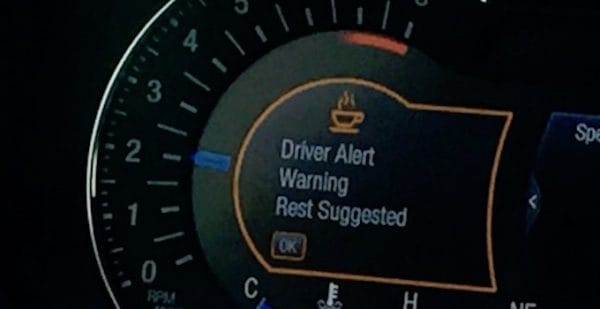Don’t Become A Statistic: How To Beat Driving Fatigue

Drowsy Driving is as Dangerous as Drunk Driving.
And yet, it’s probably happened to all of us. You’re driving along, either on a long road trip or perhaps on the way home after a night shift. Suddenly, you find yourself nodding off, or you begin to drift off the road. These and other signs can be an indication that driving fatigue is setting in, a condition that happens to millions of Americans every year.
It’s hard to acquire confirmed statistics for driving drowsy because there is no “breathalyzer” test for drowsiness, and many states depend on self-reporting. However, the National Highway Traffic Safety Administration (NHTSA) and the Center for Disease Control (CDC) have been working to compile data to show the significant impact of driving fatigue.
According to the NHTSA, driving fatigue caused almost 850 deaths in 2014. They also estimated that “between 2005 and 2009 there was an estimated average of 83,000 crashes each year related to drowsy driving.”
Based on surveys conducted by the National Sleep Foundation, drivers between the age of 18-29 are much more likely to drive drowsy than any other age group. Additionally, those that work nights, are sleep deprived, or have children at home are also at risk of driving while drowsy.
Related Reading: Rips for Stress-Free Driving

Driving during your body’s usual sleep time increases your chances of suffering from driving fatigue. Photo: Taras Makarenko
The Warning Signs of Driving Fatigue
Wondering what driving drowsy or driving fatigue looks like? The CDC has put together a list of what you should be aware of when driving. If you experience any of these, immediately pull over to rest or change drivers. Find a rest stop, or exit the highway and pull into a gas station.
- Difficulty remembering the past few miles driven
- Missing your exit
- Drifting from your lane
- Hitting a rumble strip on the side of the road
- Yawning or blinking frequently
I have had to pull off the road on a number of occasions. Sometimes, a 15-minute nap is enough to refresh my energy, and sometimes I sleep a bit longer. It can be helpful to get out and take a long stretch to get the blood flowing. Walk around, or walk into the gas station for a bathroom break. Grab a healthy snack to stimulate your senses and bring you energy.
What doesn’t work is turning up the radio or opening a window. While these may sound like good ways to keep yourself awake, those actually are not effective measures (for most people, anyway) to keep you awake and alert.
Be Safe on the Road this Summer: 9 Tips for Road Trip Safety

Don’t become a statistic. Make sure you follow these simple tips. Photo: Netto Figueiredo
How To Combat Driving Fatigue
The best way to combat driving fatigue happens long before you ever slide into the driver’s seat and fire up the engine. The number one way to stay alert and awake on long road trips is to make sure you consistently get a good night’s sleep.
Additionally, follow these tips:
- Avoid drinking any alcohol before driving
- Avoid driving during the peak sleepiness periods
- Check your medications to ensure they don’t cause drowsiness
- Stop every couple of hours to get out and stretch
- Take adequate breaks and get proper nutrition to stay energized
- Don’t drive more than 8 hours in a day
If you find yourself battling driving fatigue while on a road trip and need a short-term solution, a couple of cups of coffee may do the trick, but that is a short-lived remedy. The only true way to remain statistic free is to make sure you are well-rested and, if possible, have another driver to help with the journey.
The results of driving fatigue can be severe and life-changing. Follow these driving fatigue prevention tips during your next road trip adventure and keep you and your loved ones from becoming a statistic.
